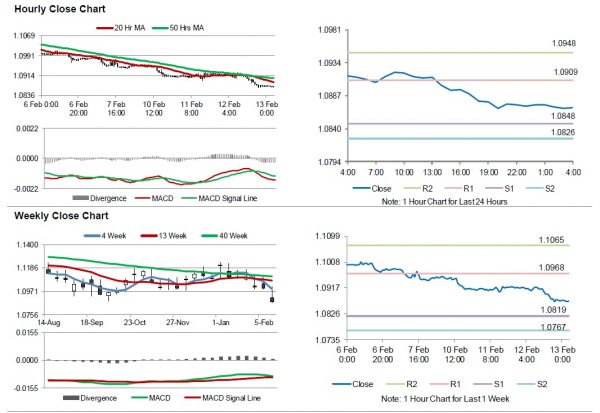For the 24 hours to 23:00 GMT, the EUR fell 0.43% against the USD and closed at 1.0872.
Data showed that Euro-zone’s industrial production dropped 4.1% on a yearly basis in December, more than market expectations for a fall of 2.3% and compared to a revised drop of 1.7% in the previous month.
Separately, in the US, the MBA mortgage applications rose 1.1% on a weekly basis in the week ended 07 February 2020, compared to 5.0% in the prior week. Meanwhile, the nation’s budget deficit unexpectedly widened to $33.0 billion in January, compared to a deficit of $13.3 billion in the prior month.
In the Asian session, at GMT0400, the pair is trading at 1.0870, with the EUR trading slightly lower against the USD from yesterday’s close.
The pair is expected to find support at 1.0848, and a fall through could take it to the next support level of 1.0826. The pair is expected to find its first resistance at 1.0909, and a rise through could take it to the next resistance level of 1.0948.
Looking ahead, traders would keep a close watch on Germany’s consumer price index (CPI) for January, slated to release in a few hours. Later in the day, the US CPI for January as well as the initial jobless claims will keep investors on their toes.
The currency pair is trading below its 20 Hr and 50 Hr moving averages.














